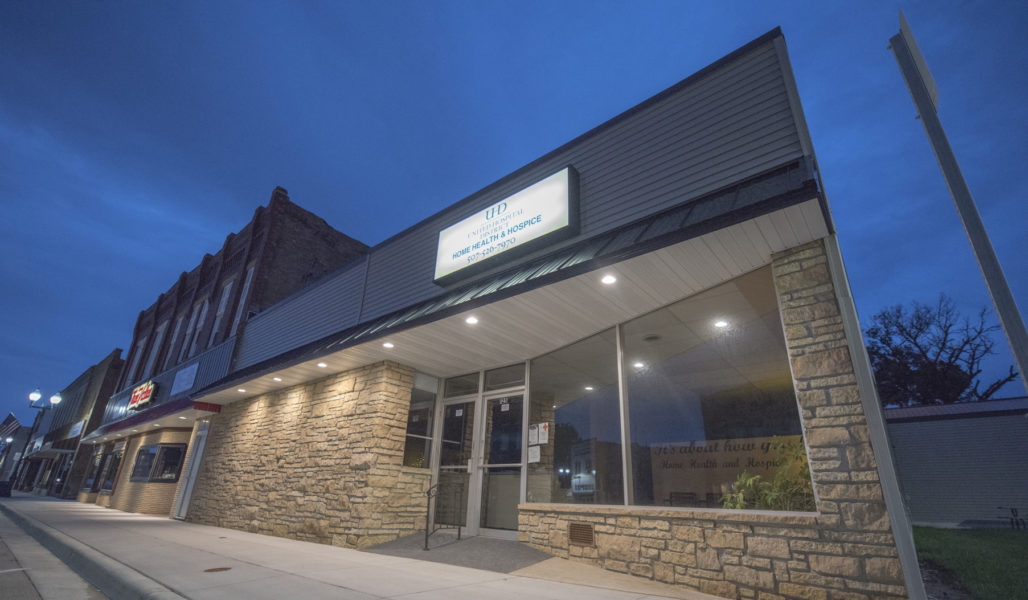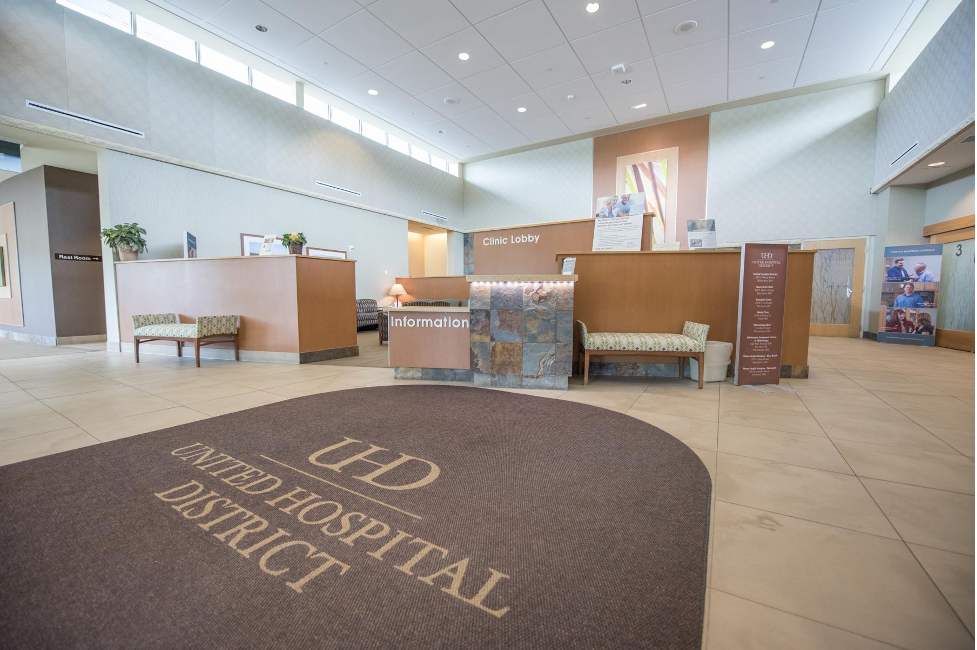
Relaxed COVID regulations gives rural, elderly population easier access to home health and hospice services
“At the beginning of the pandemic, everyone felt the lack of access to healthcare providers,” said Mary Ellen Rigby, director of United Hospital District’s (UHD) Home Health and Hospice. “It came to me that this limited access to providers during COVID actually mimicked the limited access to healthcare that rural patients have experienced all along.”
Rigby, who personally lives in such a rural area in Minnesota that the closest town has only 235 people, has devoted her career to caring for those who live in rural America. UHD, as an organization, shares that mission. When health insurance government regulations were relaxed in order for the country to deal with the global pandemic, health care services in general were suddenly made available to rural patients in a way that has never been available before.
“It has been a complete game changer for us,” Rigby said. “We’re very hopeful that the rules of telehealth visits, especially as they apply to home care and hospice services, will remain more open and flexible so we can continue delivering the level of healthcare that these people deserve.”

Photo description: United Hospital District
A Cost-Effective, High Quality Solution for Chronically Ill Patients
According to Rigby, home health care, particularly for chronically ill rural patients, is a cost-effective solution that provides a higher quality of care than would otherwise be available. In order to get Medicaid benefits prior to COVID, patients had to have a face-to-face encounter with a physician who could certify they were eligible for home health care.
“In rural America, that could mean hours of travel for an ill patient,” Rigby said. “Most of the young people grow up and move away so it’s not easy for an adult son or daughter to get an aging parent to the doctor.” This regulation has been lifted during the pandemic, which means many more patients in need of home health services are able to obtain them after a telehealth visit.
Patients who have chronic, long-term health issues such as diabetes, congestive heart failure, or chronic obstructive pulmonary disease can be better monitored with home health care where small warning signs of potential problems can be taken care of before the situation becomes an emergency.
“The cost for home health nurses who can use telehealth to consult with a doctor on a patient they know very well is miniscule when compared to a three- to five-day emergency hospital visit,” Rigby said. “We can more easily catch a symptom before it becomes a bigger issue.
“For example, one of our homebound patients had an underlying lung condition along with congestive heart failure,” Rigby shared. “We have cared for her long enough to know when something is changing in her condition. When that happens, we can connect with a provider through telehealth to check her breathing, order labs or check her body chemistry. If we catch things early enough, it may mean a couple extra visits, a slight adjustment to her diuretics or maybe using a catheter for a couple of days. Otherwise, it could mean an ambulance trip and a short-term rehab visit to a nursing home, which are both much more expensive.”
Since the relaxing of health insurance regulations in March 2020, UHD has seen a 35% increase in home health care visits.

Photo description: United Hospital District lobby
Hospice Care at Home
Besides being able to provide home health services to the rural population, UHD’s Home Health and Hospice can now more easily allow hospice patients to die in their homes, surrounded by loved ones, with the support of telehealth.
“When a medically complex patient requiring a tremendous amount of medical support discharges to hospice at home, telehealth allows a physician to interact with the family to reassure them and respond to a patient’s changing needs,” Rigby explained. “Telehealth provides a better level of communication between a hospice nurse, the family and the provider resulting in the best outcome possible for the patient.”
Although a hospice nurse visited such a patient daily, the family had the comfort of knowing that a physician was a simple video call away if they had questions about what was happening and the comfort levels of their dying family member. “There was a huge comfort in knowing that the physician was right there and that they could make sure they were making the right choices in this difficult time,” Rigby said.
